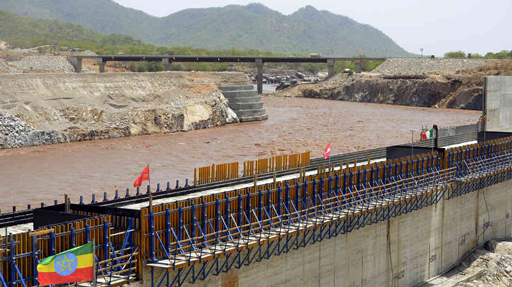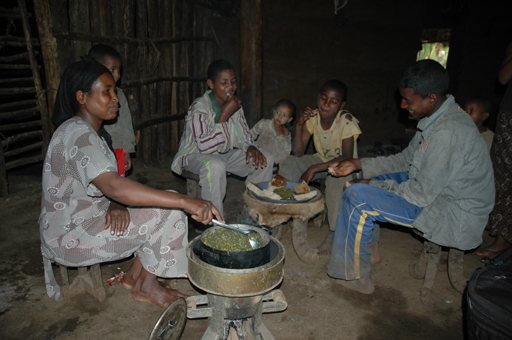12.3.1 Ethiopia’s Climate Resilient Green Economy
Awareness of climate change impacts has intensified in recent years. The Ethiopian government has decided to respond in a way that not only seeks to mitigate and adapt to climate change, but also to use this as an opportunity to switch to a new development model that will be sustainable. To this end, the government has initiated the Climate Resilient Green Economy (CRGE) strategy (FDRE, 2011). This aims to protect the country from the adverse effects of climate change and to build a green economy that will help realise Ethiopia’s ambition to reach middle-income status before 2025. The term green economy is defined as a sustainable economy and society with zero carbon emissions where all energy is derived from renewable resources which are naturally replenished. In contrast, a black energy economy is based on carbon-intensive fossil fuels such as coal and oil.
Ethiopia’s CRGE strategy identifies more than 60 initiatives to limit greenhouse gas emissions while still bringing economic development. The aim is for emissions in the year 2030 to be roughly the same as they were in 2011 when the strategy was published. This is less than half the level estimated under a conventional development path.
The CRGE plan is based on four pillars (FDRE, 2011):
- Agriculture: improving crop and livestock production practices for higher food security and farmer income while reducing emissions.
- Forestry: protecting and re-establishing forests for their economic and ecosystem services, including as carbon stocks.
- Power: expanding electricity generation from renewable sources of energy for domestic and regional markets.
- Transport, industrial sector and buildings: leapfrogging to modern and energy-efficient technologies in transport, industrial sectors and buildings. (Leapfrogging means jumping ahead without going through a slow development process.)
The required budget for the CRGE is US$150 billion for 20 years, most of which is expected to come from external sources (Gebremedhin and Mengistu, 2014). Four key initiatives have been identified for fast-track implementation:
- Exploiting Ethiopia’s vast hydropower potential.
- Large-scale promotion of advanced rural cooking stoves.
- Efficiency improvements in livestock rearing.
- Reducing emissions from deforestation and forest degradation.
Taking each of these in turn, the country’s vast hydroelectric power potential through its 12 river basins is being exploited by building large dams such as the three Gilgel Gibe dams and the Grand Ethiopian Renaissance Dam (Figure 12.2), which is expected to be Africa’s largest dam. These provide renewable energy but, internationally, these projects are contested because of the potential impact they could have downstream in terms of reducing supply, particularly in Egypt (BBC, 2014).

Secondly, the government favours the large-scale promotion of advanced rural cooking stoves because they are fuel efficient (Figure 12.3). Traditionally, most rural households burn wood and charcoal on open fires to cook, causing indoor and outdoor air pollution. The new stoves use less fuel, are safer and produce less smoke which brings health benefits.

Thirdly, efficiency improvements in the rearing of livestock can bring economic benefits. Ethiopia has more cattle than any other African country and is the eighth-largest producer of livestock in the world (CNFA, 2015). Yet in 2011 Ethiopia accounted for less than 1% of total global meat exports, so this is clearly an area of potential growth.
Fourthly, the government is prioritising the reduction of emissions from deforestation and forest degradation. This initiative aims to lower the emission of greenhouse gases as a result of changing land use. The country’s diverse landscapes provide food, water, firewood, construction materials and medicines, and if well managed can help reduce the risk of flooding, drought and famine. While climate change has increased the frequency of these risks, effective land use management can contribute to resilience against such risks, as well as improve biodiversity and carbon stocks in the soil and vegetation (World Bank, 2014). The pressures on land use are due to the expansion of subsistence agriculture and livestock grazing in fragile areas, leading to land and water degradation. But this is now changing, with large-scale landscape restoration underway in Tigray, for example (World Bank, 2014).
The CRGE strategy demonstrates Ethiopia’s commitment to responding to climate change. The government is developing national frameworks for adaptation and establishing the institutional structures to manage climate change such as the country’s Environmental Protection Authority (EPA) which coordinates and makes climate change policy an integral part of development initiatives.
12.3 Response to climate change in Ethiopia
